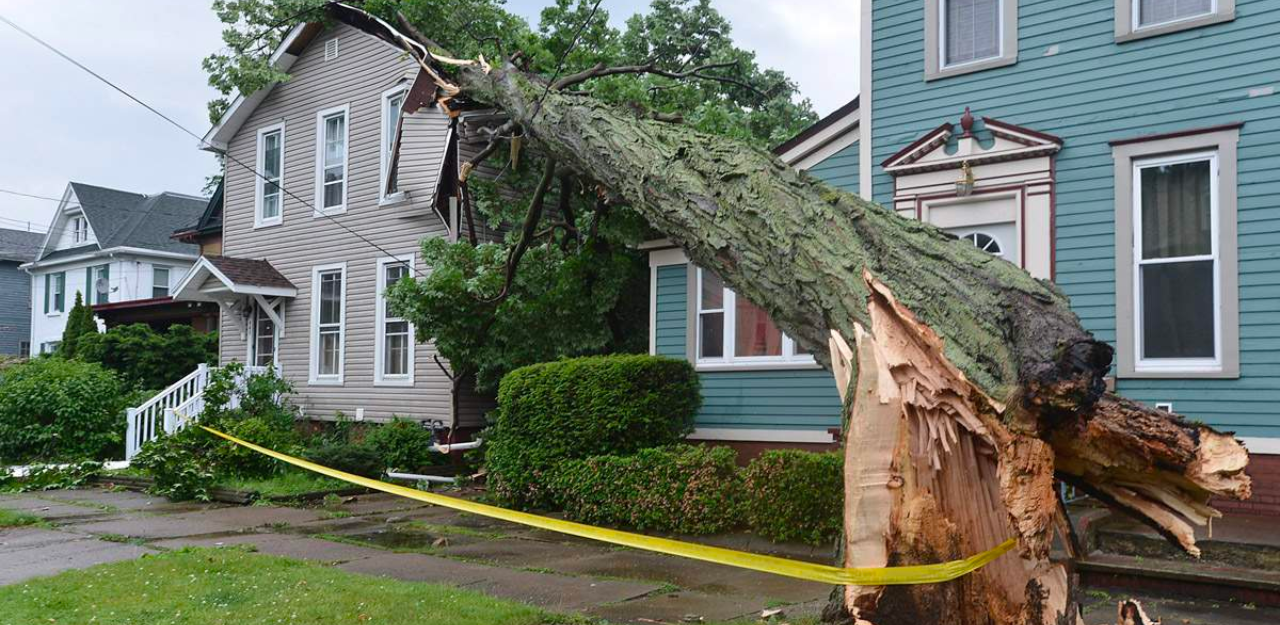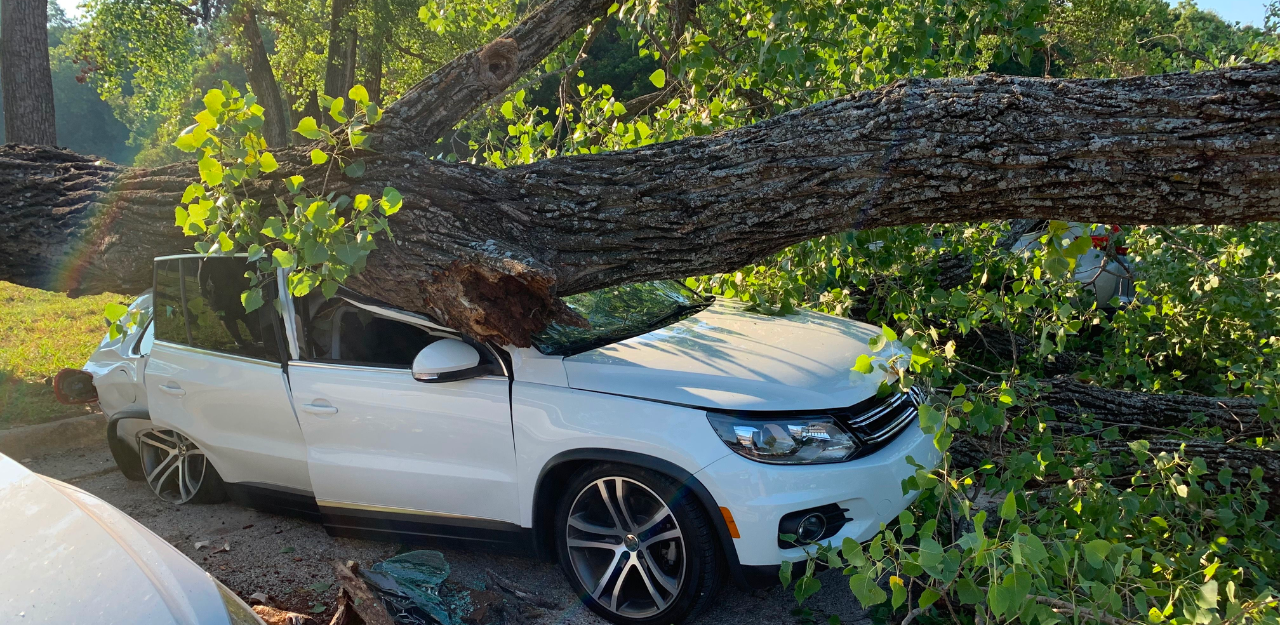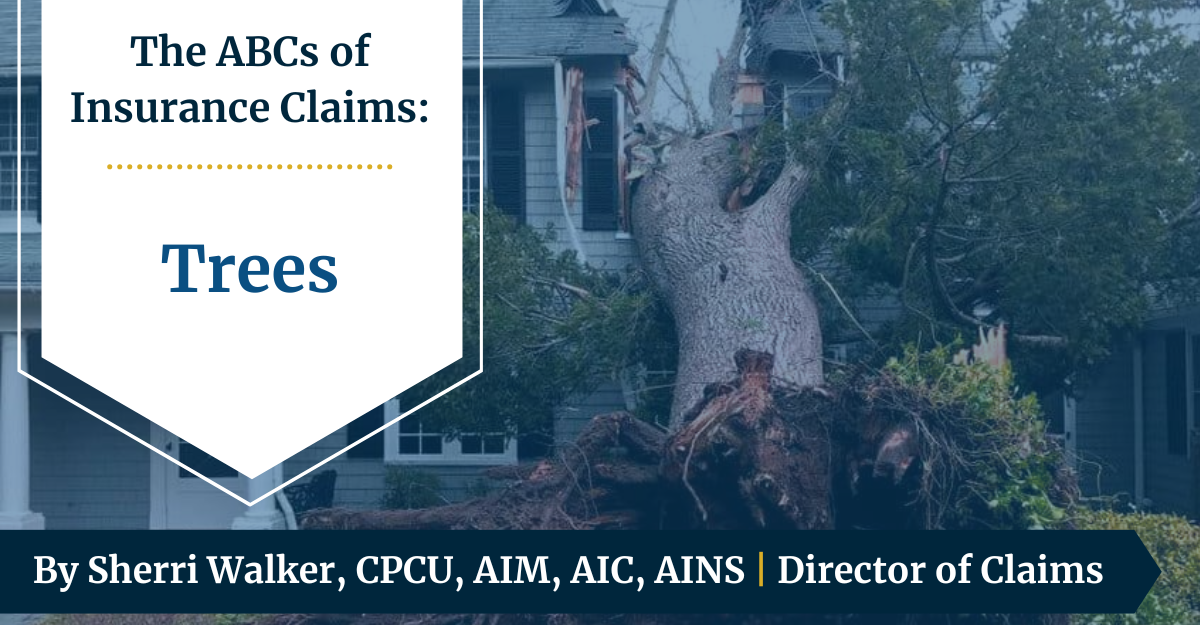Welcome to the ABCs of Insurance Claims. Over the next few months, Sherri Walker, Sentinel’s Director of Claims will address an aspect of claims handling for every letter of the alphabet to help provide a better understanding of the claims process.
Trees - Falls & Claims
Most of us have either seen or experienced damage from a storm. While loss of power and wind lifted shingles are frustrating, having a tree fall can raise a whole different level of urgency and concern – especially if the tree falls on your house, business, or vehicle. Trees are one of the most finicky and confusing areas of insurance coverage around. I could write a full dissertation on the intricacies of how claims respond, but today we’re going to address some of the most common questions and concerns that are raised surrounding tree claims.
Are My Standing Trees Covered Under My Policy?
In very select circumstances, yes. Your standing tree is covered for damage from fire or lightning, explosion, aircraft damage, and on some Homeowner’s policies, even vehicle damage, theft and vandalism. This coverage is limited, often paying a specified amount, such as a $500 or $1000 per tree, with a cap on the total amount or percentage of the policy that can be used for these damages. This covers the cost of the tree only, with no additional coverage for the cost of removal of the tree. For a standing tree that is simply dead, is rotted, or is a falling hazard but still standing, your policy will not cover the costs to take a tree down.
A Tree On My Property Fell, What Is Covered?
There are some conditions that apply for coverage on a fallen tree to be triggered. Some of these conditions surround the proximate cause of the fall. To be covered, the tree must fall due to wind or hail, or the weight of ice, sleet, or snow; and it would need to fall onto a covered structure or across a walkway/driveway. Your policy will pay the actual cost to remove the tree from the covered structure or path to facilitate repairs or access.
The costs to remove the resultant debris from your property are very limited in nature, and on a Homeowner’s, policy is typically granted at $500 or $1000 per tree, with an overall cap of $1000 or $2000 total. Business coverage can vary widely, either by endorsement or by exclusionary language, so be sure to review the policy language specific to your circumstances.
If you are a tenant, there is no for debris removal coverage for the trees that fall which are owned by the landlord. If a tree falls in your yard but doesn’t hit a covered structure or path, then it is typically not covered either; although there are Homeowner’s endorsements that can be added to take away this requirement and provide some limited coverage.
My Neighbor’s Tree Fell Onto My Property, Who’s Insurance Pays?
This is probably the question I get most often – especially after a storm. And as unfair as it may sound, if the tree was knocked down simply because of a storm, it’s considered an “Act of God”, and your own policy would apply, with the same conditions as if it was your own tree as discussed above. However, if your neighbor’s tree was dead prior to the storm, and you had let them know a reasonable amount of time beforehand that you had concerns that their dead tree was going to fall on your property, then this could possibly be addressed under their liability coverage.

If I can give you any piece of advice regarding trees, it’s this: assess your trees and your neighbors’ trees on a regular basis. If you see trees that appear to be dead, leaning heavily, or not producing leaves during the time of year when it would be expected, then that tree could come down during a storm. If it’s your tree, spend the money to get it removed properly. If it’s your neighbor’s tree, send them a certified letter expressing your concerns – that way you have a paper trail to show that the neighbor has been put on notice that their tree could be their liability issue if it falls and damages your property.
Do I Need To Wait For The Adjuster To Remove The Tree?
The long and the short of this is No. While there are lots of superpowers that would benefit an adjuster, X-Ray vision would be the one most of us would choose. I would love to be able to look through that 100-year-old oak that is on your house and see what the damage is; but unfortunately, adjusters really can’t do much in the way of inspection if they cannot see the structure or get to it over limbs and trunks.
What is the most helpful is to take photos of the trees prior to removal, and if possible, to secure photos as the tree removal service is clearing the area. Most tree services are on a delay during a storm, and the last thing any adjuster wants to do is delay even further the process – especially if the tree has created a hole in your roof that is allowing rain in.
Tree services can typically tarp the roof for you to help prevent further interior damage. You will want to make sure that the tree service itemizes their billing into 3 categories: The cost to drop the tree (take it off a structure), the cost to haul the tree off (debris removal), and the cost of any temporary repairs that they perform (Including tarping or boarding windows).
Is Removal Of The Stump That My Fallen Tree Left Covered?
Unfortunately, there is no coverage under your policy for the stump grinding or the take down of any remaining trunk from a splintered tree. For an additional out of pocket expense, most tree services can either take the remnants out for you or refer you to a stump grinder. The rates will vary depending on the size of the stump as well as what type of wood it is – some wood is simply much harder than others, and as such requires more work or heavier equipment to take down.
A Tree Fell On My Car – What Do I Do?

If this happens, you’ll again need to have a tree service come out to remove it from your vehicle. There is no coverage under your auto policy to remove the tree, but there is a chance your homeowner’s policy may respond if the car is in your driveway, as this would trigger coverage. If you have comprehensive coverage on your auto, you can file for the car damages there.
Safeguarding Your Success
We hope you never have a tree fall, but if you do and have questions about your coverage, our Sentinel Claims Team is here to assist you in filing your claim and answering any questions you may have about your coverages. We’re here to make sure that when the worst happens, you’re not barking up the wrong tree or “leaf-ing” coverage on the table. Contact us today to learn more.


